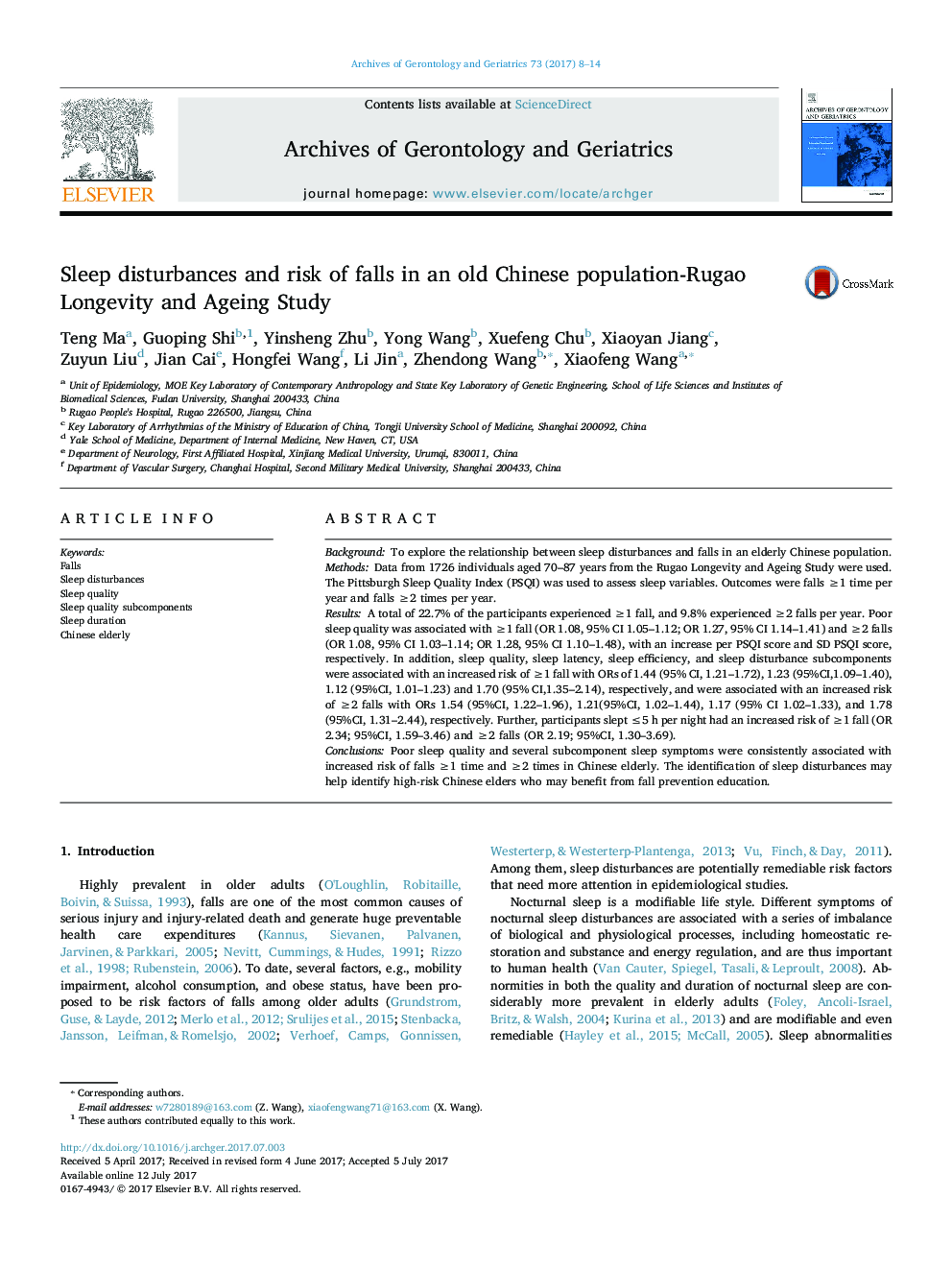| کد مقاله | کد نشریه | سال انتشار | مقاله انگلیسی | نسخه تمام متن |
|---|---|---|---|---|
| 5500849 | 1534416 | 2017 | 7 صفحه PDF | دانلود رایگان |

- We described the prevalence of falls and test the association between sleep disturbances and falls in Chinese elderly.
- We found that poor sleep quality was associated with increased risk of falls and recurrent falls in Chinese elderly.
- Sleep latency, sleep disturbance, and sleep duration of â¤5 h were associated with increased risk of both â¥1 fall or â¥2 falls.
BackgroundTo explore the relationship between sleep disturbances and falls in an elderly Chinese population.MethodsData from 1726 individuals aged 70-87 years from the Rugao Longevity and Ageing Study were used. The Pittsburgh Sleep Quality Index (PSQI) was used to assess sleep variables. Outcomes were falls â¥1 time per year and falls â¥2 times per year.ResultsA total of 22.7% of the participants experienced â¥1 fall, and 9.8% experienced â¥2 falls per year. Poor sleep quality was associated with â¥1 fall (OR 1.08, 95% CI 1.05-1.12; OR 1.27, 95% CI 1.14-1.41) and â¥2 falls (OR 1.08, 95% CI 1.03-1.14; OR 1.28, 95% CI 1.10-1.48), with an increase per PSQI score and SD PSQI score, respectively. In addition, sleep quality, sleep latency, sleep efficiency, and sleep disturbance subcomponents were associated with an increased risk of â¥1 fall with ORs of 1.44 (95% CI, 1.21-1.72), 1.23 (95%CI,1.09-1.40), 1.12 (95%CI, 1.01-1.23) and 1.70 (95% CI,1.35-2.14), respectively, and were associated with an increased risk of â¥2 falls with ORs 1.54 (95%CI, 1.22-1.96), 1.21(95%CI, 1.02-1.44), 1.17 (95% CI 1.02-1.33), and 1.78 (95%CI, 1.31-2.44), respectively. Further, participants slept â¤5 h per night had an increased risk of â¥1 fall (OR 2.34; 95%CI, 1.59-3.46) and â¥2 falls (OR 2.19; 95%CI, 1.30-3.69).ConclusionsPoor sleep quality and several subcomponent sleep symptoms were consistently associated with increased risk of falls â¥1 time and â¥2 times in Chinese elderly. The identification of sleep disturbances may help identify high-risk Chinese elders who may benefit from fall prevention education.
Journal: Archives of Gerontology and Geriatrics - Volume 73, November 2017, Pages 8-14